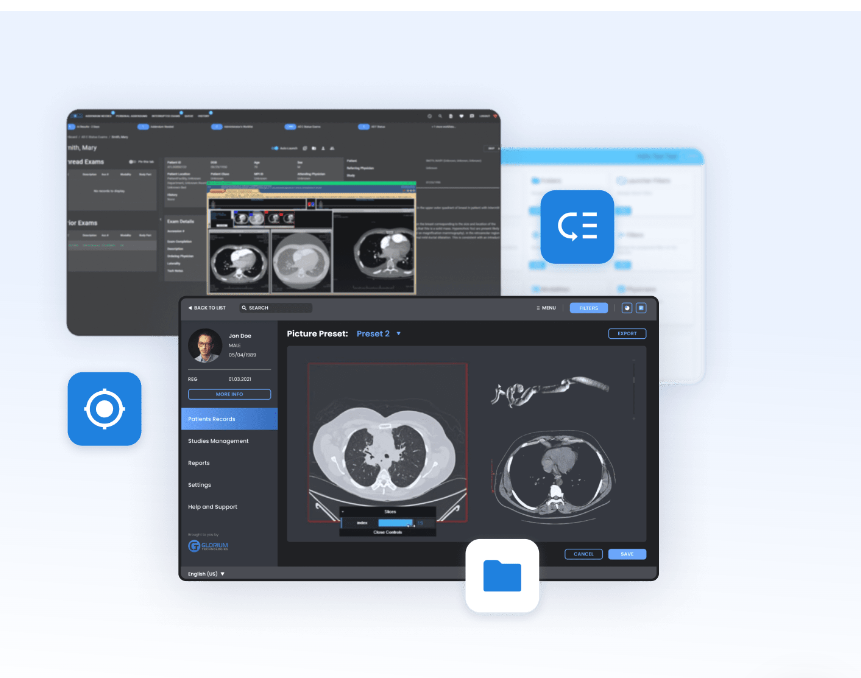In the realm of modern healthcare, efficiency and accuracy are paramount. The ability to seamlessly integrate medical imaging data across various platforms and systems is a critical component in ensuring smooth workflows, accurate diagnoses, and ultimately, enhanced patient care. This is where DICOM integration comes into play, revolutionizing the way medical images are stored, shared, and accessed.
Understanding DICOM Integration
DICOM, short for Digital Imaging and Communications in Medicine, is the standard protocol utilized for the management and exchange of medical imaging information. It provides a framework for the storage and transmission of various types of medical images, including X-rays, MRIs, CT scans, and ultrasounds, among others.
DICOM integration involves the seamless incorporation of DICOM standards into healthcare information systems, allowing for the interoperability of different imaging devices, picture archiving and communication systems (PACS), and electronic health record (EHR) systems. This integration facilitates the sharing and retrieval of medical images and associated patient data across disparate platforms and healthcare facilities, regardless of vendor or location.
The Benefits of DICOM Integration
Enhanced Interoperability
By adopting DICOM integration, healthcare organizations can break down the barriers between disparate imaging systems and software applications. This interoperability enables seamless communication and data exchange between various medical devices and software platforms, streamlining workflows and improving overall operational efficiency.
Improved Workflow Efficiency
Integrating DICOM standards into existing healthcare IT infrastructure eliminates the need for manual data entry and cumbersome file conversions. Medical images and associated patient data can be transmitted seamlessly between different systems and departments, reducing the risk of errors and delays in diagnosis and treatment.
Facilitated Collaboration
DICOM integration fosters collaboration among healthcare providers by enabling the secure sharing and access of medical images and patient data across different specialties and care settings. This facilitates multidisciplinary care coordination, leading to more informed decision-making and improved patient outcomes.
Enhanced Diagnostic Accuracy
By ensuring the availability of high-quality medical images and associated data at the point of care, DICOM integration empowers healthcare providers to make more accurate and timely diagnoses. This can lead to earlier detection of diseases, better treatment planning, and ultimately, improved patient outcomes.
Compliance with Regulatory Requirements
Adopting DICOM standards for medical image management helps healthcare organizations maintain compliance with regulatory requirements, such as the Health Insurance Portability and Accountability Act (HIPAA) in the United States and the General Data Protection Regulation (GDPR) in the European Union. This ensures the privacy and security of patient information while facilitating data exchange and collaboration.
Implementing DICOM Integration Solutions
The successful implementation of DICOM integration requires careful planning, collaboration, and expertise. Healthcare organizations must select appropriate DICOM-compliant solutions and work closely with vendors and IT professionals to seamlessly integrate these systems into existing infrastructure.
Key steps in implementing DICOM integration solutions include:
- Needs Assessment: Conduct a comprehensive assessment of organizational needs, existing infrastructure, and workflow requirements to determine the scope and objectives of the integration project.
- Vendor Selection: Evaluate DICOM-compliant solutions from reputable vendors, considering factors such as functionality, interoperability, scalability, and cost-effectiveness.
- System Integration: Work with vendors and IT experts to integrate DICOM-compliant imaging systems, PACS, and EHR systems into existing healthcare IT infrastructure, ensuring seamless data exchange and interoperability.
- User Training: Provide comprehensive training and support to healthcare providers and staff to ensure proficiency in using DICOM-integrated systems and maximizing the benefits of the technology.
- Testing and Optimization: Conduct thorough testing and optimization of DICOM integration solutions to identify and address any issues or performance bottlenecks, ensuring smooth operation and reliability.
- Ongoing Maintenance and Support: Establish protocols for ongoing maintenance, updates, and technical support to ensure the long-term viability and effectiveness of DICOM integration solutions.
The Future of DICOM Integration
As healthcare continues to evolve and embrace digital technologies, the importance of DICOM integration will only continue to grow. Advancements in artificial intelligence (AI), machine learning, and cloud computing are poised to further enhance the capabilities of DICOM-integrated systems, enabling more personalized and precise healthcare delivery.
By leveraging the power of DICOM integration, healthcare organizations can unlock new possibilities for innovation, collaboration, and patient care. From improved diagnostic accuracy to streamlined workflows and enhanced interoperability, the benefits of DICOM integration are undeniable, making it an essential component of modern healthcare infrastructure.
In conclusion, DICOM integration holds the key to unlocking the full potential of medical imaging data in improving patient care and outcomes. By embracing DICOM standards and integrating imaging systems and software platforms, healthcare organizations can pave the way for a more connected, efficient, and effective healthcare ecosystem.





Comments